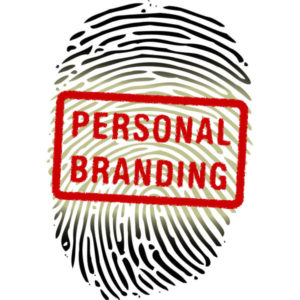Risk taking, as you will soon learn, is an important part of Maria Winans‘ personal brand. And funny enough, it was risk taking that lead me to her. Truth be told, I was one of two males who dared to attend the Women’s Luncheon at IBM’s Amplify Conference, thanks to the cajoling of the peripatetic Tamara McCleary. Leading a vibrant panel discussion on personal branding, Winans struck me as a consummate executive who somehow hadn’t lost her individuality despite 25 years at one of the largest business organizations in the world. Curious to learn more, I weaved my way through the 300 or so ladies in attendance and almost sheepishly asked for an interview after the panel.
 Winans, whose title is CMO, IBM Commerce, Mobile and Social is a fellow believer in the power of AND. She describes herself as business executive AND a mother, a friend AND a trainer, an artist AND a boxing student. Raised in North Carolina, she is also a first generation American AND a Latina. Her secrets to personal branding are anything but and she is delighted to share them, especially with young women whom she hopes to inspire to overcome obstacles and do great things.
Winans, whose title is CMO, IBM Commerce, Mobile and Social is a fellow believer in the power of AND. She describes herself as business executive AND a mother, a friend AND a trainer, an artist AND a boxing student. Raised in North Carolina, she is also a first generation American AND a Latina. Her secrets to personal branding are anything but and she is delighted to share them, especially with young women whom she hopes to inspire to overcome obstacles and do great things.
When it comes to personal branding, Winans is all about substance. Set goals, figure out the skills required and then march forward, learning every step of the way. Reputation, as she points out, can not be purchased. It must be earned. The reputation that Winans sought for herself was that of a risk-taker and innovator, one who was willing to embrace new challenges and unconventional career paths. As this approach has clearly paid off for her, Winans encourages if not dares other women, particularly the perfectionists among them, to chose the road less traveled, to take chances and not be afraid of failure given the lessons it can offer. With that advice, Winans certainly enters my pantheon of truly “renegade” CMOs.
Drew: I’m curious, why at the women’s luncheon at Amplify 2015 was the focus was on personal branding?
We chose that because typically these panels are more on topics like work/life balance and I wanted to focus this year on more practical advice from the successful women on the panel. I really wanted them to talk about how they’ve managed their careers. It gave us an opportunity to think about their growth, where they started and how they progressed forward in their career. Regardless of your age or career stage, whether you are a Millennial or a Generation X or Baby Boomer, this was a topic just about everyone in the audience could relate to.
Drew: Do you think women executives need to pay particular attention to personal branding?
I think that men and women both need to. I think it’s critical for everyone to really think about how they build, how they cultivate, how they evolve their personal brand. I’m a strong believer that it is your thumbprint, is what represents you, what you believe and I think that your work in itself is another proof point of your personal brand. It’s important that you stand tall, that you really represent yourself.
Drew: Talk to me about your personal brand.
I take great pride in what I do, how I lead a team and what I stand for. I grew up in an environment of tremendous respect for my parents, for actions they took in bringing us to the U.S., for personal growth for my siblings and myself. So I came from a very strong culture of achievement and that diversity is something that you should cherish as a gift, and you should cultivate it, you should embrace it. So my whole philosophy when it came to building my career at IBM very early on was that I wanted to establish goals, I wanted to be successful, I wanted to grow my career and I knew that there’s different stages of that growth path.
Drew: How did this play out early in your career?
I came into IBM with my eyes wide open. I didn’t know if I was going to head into marketing or sales or strategy or finance. And so very early on I said to myself, I need to skill myself, find my passions and learn as much as I can. But I also had a vision and a goal. I wanted to establish myself as a professional, I wanted to lead from the front, I wanted to become an executive and by the time I turned 40, I want to become a vice president. I had very established goals, and with that I set forward on really understanding what was it going to take for me to continue to grow in my career.
Drew: So how did you differentiate yourself?
I looked for opportunities that were about new initiatives and were about creating new businesses. I started to develop a skillset as an innovator, somebody who took risks and looked for opportunities that were different and required finding new teams and developing new skills. I cultivated that, and with that, created an environment for people to see that through my actions, that collaboration was a top priority, bright ideas were welcomed, innovation was the priority, and no idea was a bad idea.
Drew: Did your personal brand evolve?
I think a personal brand is in the way that you carry yourself as an individual in every walk of life; in your business and in your personal life. And at the same time, I’m learning every day. I don’t think a personal brand is something that you create and then never changes. I think it evolves — if your career evolves, it evolves in the type of jobs. But I think the core of who you are, your character, stays true within that. I am avid believer in the need to never stop learning. And I think when you look at strongest leaders in business most are lifelong students. They remain curious, aren’t afraid to tackle new initiatives and seek new paths forward.
Drew: It was clear at the luncheon that many women seek your advice about personal branding. What’s the first thing you tell them?
In life you can buy anything except your reputation. Your reputation can’t be bought; it has to be earned. And so protect it, live it. For example, just because your title says CMO, just because you lead a very large team, you still need to earn your leadership every day. And this is what I reinforce to people that I mentor, especially in the business, your reputation something you earn, something you work hard for and you stay true to.
Drew: Okay, what’s number two on your advice list?
I always get asked about risk-taking because I’m a risk-taker. I love innovation, I love trying new things and putting projects with people and saying to the team, ‘let’s go try it–the worst thing that can happen if it fails, is that we learn from it and we move forward.’ My biggest fear is regret. I fear looking back and saying ‘if we only had taken that chance.’ A lot of people fear risk taking, especially women, [many are] afraid to take those chances and everything has to be perfect and everything has to be T’s and I’s crossed. My message is that risk taking actually makes work and careers even more exciting.
Drew: How does IBM benefit from having employees like you with strong personal brands?
I think it goes back to a very simple truth–the strongest element of the IBM brand is the IBMer. That’s why we’re called IBMers. We have known ourselves and identified ourselves an IBMer and we’re proud to be IBMers. And so it absolutely is encouraged to go out and share whether it’s from a woman leadership perspective or the business that you’re leading especially at the executive level. This is the strongest element of our engagement strategy to the market. We have over 400,000 employees as you know, and they all are brand advocates of IBM.
Drew: Do you think there’s a point when it comes to personal branding that an individual can go too far, and how do you avoid crossing that line?
There’s always that self-promotional risk that you’re talking about yourself too much. We’ve all seen people that are self-promoters-it’s all about them, you know, their photo on everything. But I think that sometimes, we as women hold ourselves back. Sometimes we’re afraid as women that maybe we’re too visible, maybe we’re too self-promoting, we’re talking too much, we’re showing too much aggressiveness. So I encourage women to be vocal, to be ambitious, to show what they know and who they are, to promote themselves through their work and with that their personal brands.
